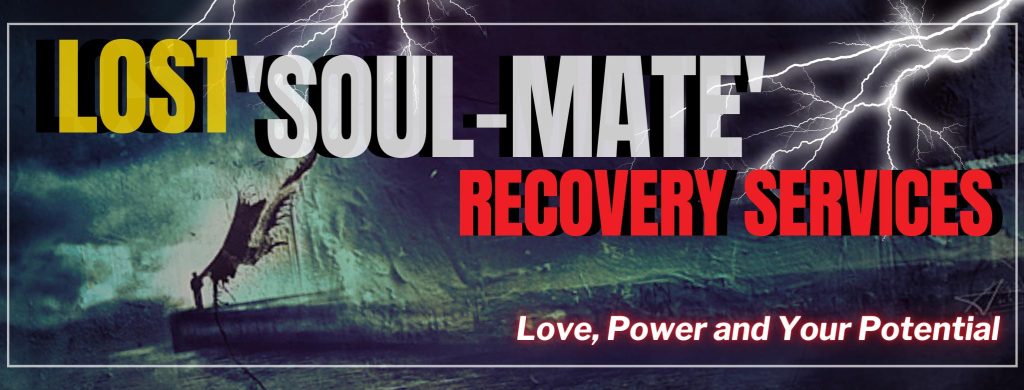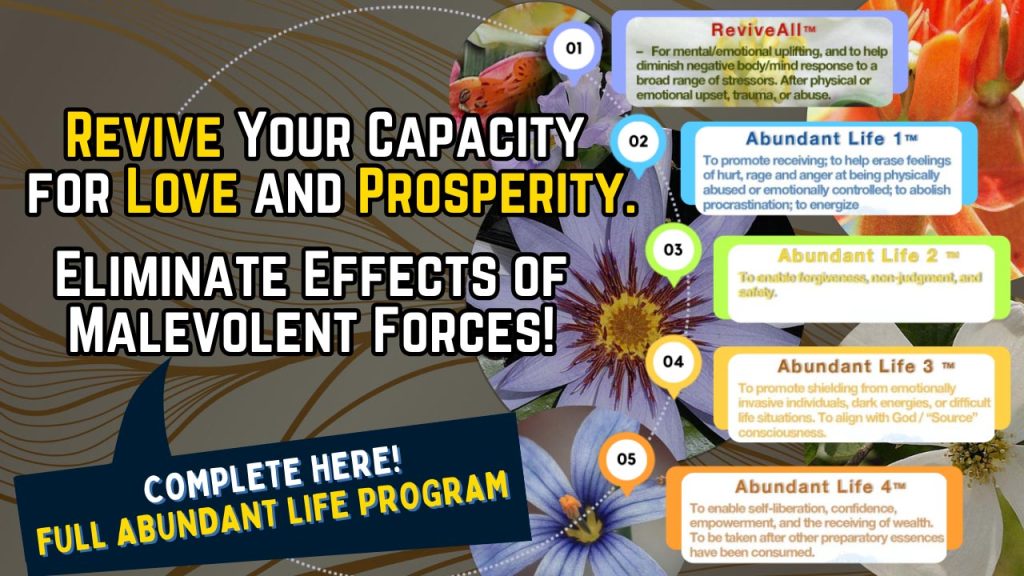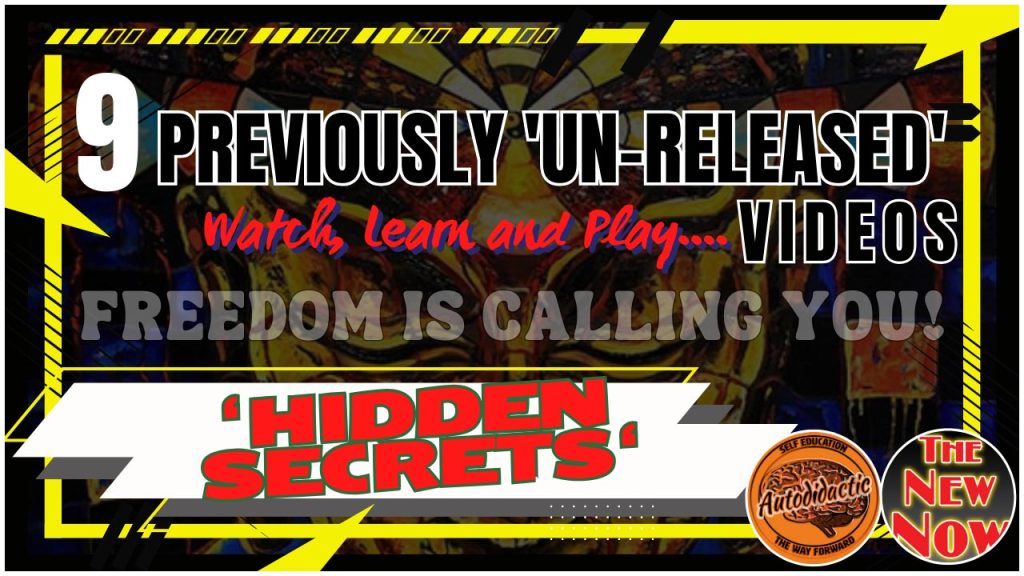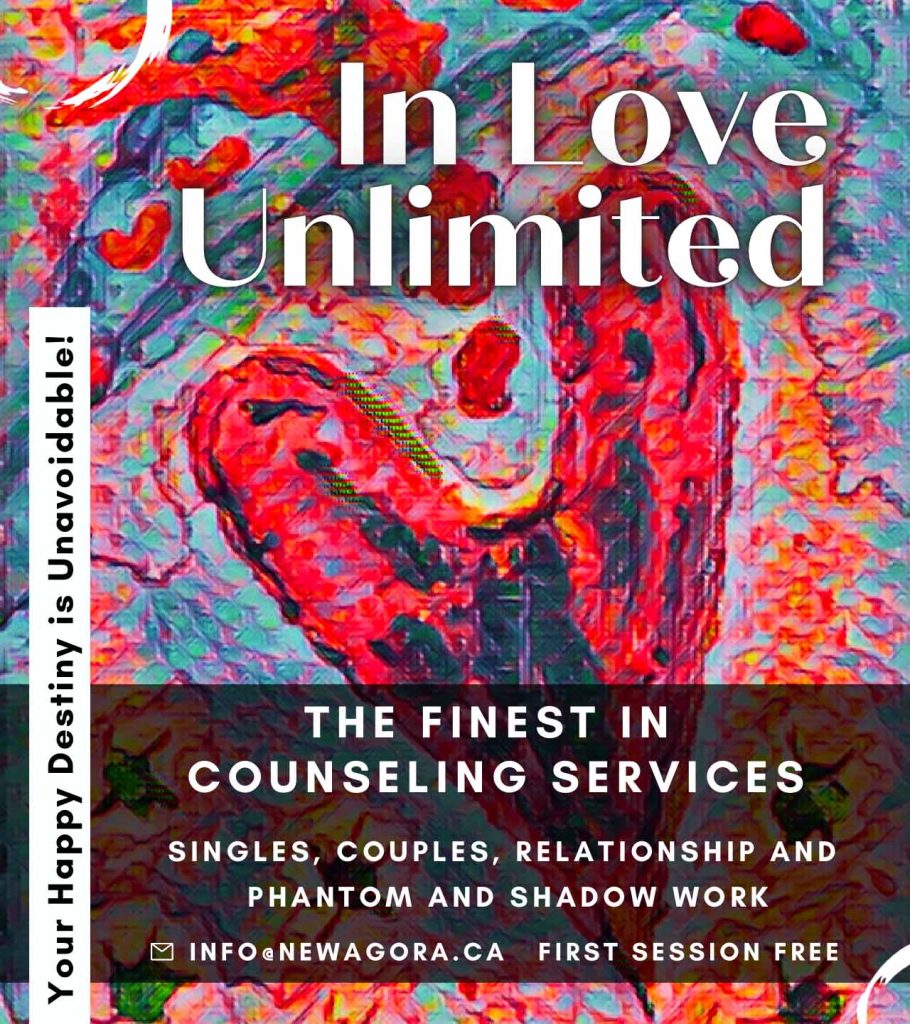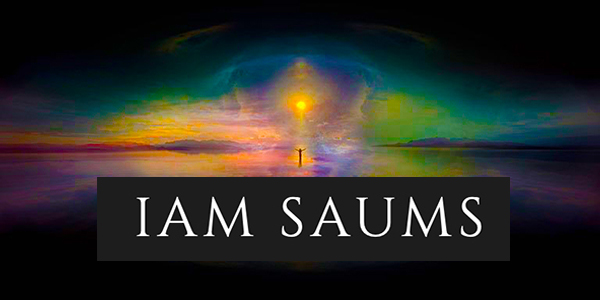Shamans to the Rescue
By Paul Levy
Our species and its civilization are currently in the throes of a collective (nervous) breakdown. Our underlying institutionalized and incorporated structures that are purportedly serving us but are in actuality keeping us asleep are breaking down as their corruption is being exposed. Like what can happen within an individual’s psyche, only writ large en masse on the world stage, we are going through a collective shamanic initiation process, a genuine near-death or “death/rebirth” experience where our world is turning upside down and inside out. Something within us, reflected by events in the external world, is falling apart and dying, potentially to be reborn and recreated in a new, more coherent and integrated form.
Just as dreams are the unconscious’ way of balancing a one-sidedness in an individual’s psyche, the “shamanic archetype” is the dynamically evolving pattern of healing that is catalyzed in the collective unconscious as a compensatory response to the on-going violence, suffering and trauma that is being acted out on the world stage. Historically, shamans were the first physicians, psychotherapists, creative artists, spiritual emissaries, prophets, translators, mediums, magicians, entertainers, culture heroes and story-tellers.
As Jung repeatedly warned, we don’t understand that the powers of darkness within the unconscious are emerging—in visible form—in our world and need to be dealt with – or else! Encountering the darker forces of the unconscious invariably activates the shamanic archetype within the collective unconscious. The darker powers demand that we contend with forces that are alien to and outside the control of our conscious egoic self, thereby animating the underlying patterns of response that inform the shamanic archetype to become operative. We, as a species, both collectively and individually, are making a shamanic descent into the darkness of the underworld—into the netherworld of the unconscious shadow side of our psyche—where we are demanded to face our own dark side.
We all have shamanic abilities, whether we know it or not—these gifts are a part of our nature. Though it is dangerous for the uninitiated and naïve westerner to engage in the shamanic realm, Michael Harner, one of the most accomplished of the western shamans, was of the opinion that “one of the biggest dangers connected with shamanism is to be ignorant about the unconscious shamanic abilities we all have.”
It is a narrow passage between these two extremes—participating in the shamanic realm unawares, or being asleep to our natural shamanic gifts. Being blindly unconscious of the intrinsic shamanic gifts that are our birthright, we are then fated to act them out unconsciously in a way that endangers ourselves and others. We are at the point in our history where we have all gotten drafted into a shamanic initiatory process, and the sooner we wake up to this and try to understand our role in this process, the better.
“Shamans,” scholar Mircea Eliade writes in his classic book Shamanism, “are pre-eminently the antidemonic champions.”
This is to say that the shaman is the figure—both in the world and within our psyche—who has it out with the forces of darkness that threaten the larger eco-system. Jung writes:
it is often impossible to speak of overcoming evil, because at such times we are in a ‘closed’ situation, in an aporia, where whatever we choose is not good. The important thing is to be aware that we are then in a numinous situation, surrounded on all sides by God…. That is how the ‘principles,’ the ‘primordial powers,’ approach a person—they put him in a numinous situation where there is no rational solution…. No one can then foresee what will happen…. We have to put our trust in the higher powers.
Jung’s words aptly describe our current world situation—we are confronted with evil, there seems to be no way out, the power of reason seems useless. In the dark times we are living through it is easy to fall into pessimism, despair, depression and hopelessness. And yet, Jung is suggesting that we are being put in a numinous situation, that the conundrum we find ourselves in is the very way that the ‘powers and principalities’ are approaching us.
The problems in our world certainly appear on the surface to be insurmountable. Psychologist and author Arny Mindell writes in The Shaman’s Body, “Shamanism is an archetypal form of behavior that appears in you when you are faced with unsolvable problems.”
Though Mindell is talking about an individual, the same thing is true on a collective scale. The myriad seemingly unsolvable world crises humanity finds ourselves in catalyzes the shamanic archetype to become activated deep within the core of our very being. It behooves us to get to know this “archetypal form of behavior,” as it is how “the higher powers” are making their acquaintance with us.
A Sacred Calling
The figure of the shaman is a sacred vocation, which is to say that the would-be shaman is “called” by the voice of their inner true nature. How our life turns out depends upon whether we hear this call and how we respond. The shamanic archetype can become spontaneously activated in us—whether we consciously know it or not—due to being wounded and traumatized by life itself.
Instead of cursing our brokenness (or our abusers), we can recognize it as a numinous event, an archetypal creative and potentially redemptive moment that seeks to make us participants in a divine, eternal happening.
We are at the moment of time in our species’ history where we, each one of us, is being called by something deeper than ourselves. In indigenous cultures, the figure of the shaman was a role in the field that was dreamed up by the community to serve a healing function for all of its members. In the current day and age, our post-modern civilization—we could even say the universe itself—is dreaming up all of us to step into the role and function of becoming modern-day shamans.
Harner opined, “I think that almost everybody is a potential shaman.”
We are all potential shamans-in-training, as our wounding dissociates us from a part of our wholeness, which in turn catalyzes us to start the shamanic/hero’s journey in search of the split-off parts of ourselves. The inner archetype of the shaman—”the shaman within”—becomes particularly animated in people who are highly sensitive to the underlying contradictions, cognitive dissonance, double-binds and psycho-spiritual illness (wetiko) that pervades the unconscious social and cultural fabric of the human community.
The shamanic experience doesn’t lend itself to—and is naturally resistant to—being politicized, bureaucratized or incorporated into mainstream, corporate culture, as it is anti-hierarchical at its core, an expression of the wild spontaneity of nature herself. The shamanic vocation is truly democratic, in that it is available to anyone who is open to receive its call. The shamanic journey needs no external mediation by a church or priest, as it is based on direct, unmediated experience.
The person who is called to a higher destiny sacrifices themselves and their lives to their vocation. If their unique and personal calling is mimicked and lived unconsciously by the collective, however, it would invariably lead to disaster on a mass scale. Oftentimes, the person who is called to follow their own inner guidance is seen by people who subscribe to the agreed-upon consensus reality (itself a form of collective madness) as having gone mad. The insidious and seemingly built-in madness of our world can make us feel crazy ourselves, and yet, something in the service of true sanity is potentially available to us through our sensitivity to this madness. Though oftentimes seen as being crazy, shamans are actually the secret agents who bring sanity into the lunatic asylum of our world, usually being the healthiest members of their community.
Typically highly empathic, the shamanic personality is very sensitive to the unconscious, both in themselves and in others. Existing in a liminal space, at the gateway between two different worlds, the shaman has very permeable boundaries between their conscious mind and the unconscious. It is as if within a shaman’s psyche there is a bridge which allows contents between the light and dark realms of consciousness to easily pass through, intermingle and reciprocally co-inform each other. Through sympathetic resonance shamans have an ability to feel into what is happening outside of themselves (be it in another person, a group or the nonlocal field) inside of themselves. Finding the outside world reflected within them, they go within and becoming truly vulnerable, turn themselves inside-out to creatively express what they find.
A key part of the shaman’s vocation is developing the capacity to travel into the spirit world and contend with entities who are conceived of as being spirits. Seeing the spirits, in essence, is being able to recognize and develop relationship with the forces of the unconscious. Wetiko can be thought of as being a spirit in its own right, which is why it is important to see how the spirit of wetiko nonlocally operates—out in the world, in our relationships, through our reactions and inside of our own mind. The process of becoming conscious doesn’t banish the unconscious, but rather, helps us to develop trust towards its spirit—which is the key—thereby allowing us to give ourselves over to the unconscious time and again, thereby learning to access and receive its gift of wisdom.
The Demon of Sickness
It is an age-old, archetypal idea that a person who is sick and suffering can transmit and get across their disease to a healthier person (the potential shaman) who is able to absorb the sickness and subdue its harmful effects, but not without endangering and impairing—at least temporarily—their own well-being. One of the most essential aspects of the shamanic process is that the would-be shaman “takes on” (which has the double meaning of “to confront” as well as “to take within oneself”) the sickness that has infected the field around them. The shaman takes the illness within themselves so as to “suffer with” the other, which is one of the root meanings of genuine compassion.
In his writings, Jung mentions the notion of the “demon of sickness”
(an equivalent term for wetiko). Due to its dis-integrating (and hence, evil—i.e., anti-life) effects, it is a primordial, age-old idea for sickness to be epitomized as an evil demon. Our subjective experience of the demon of sickness is an encounter with a seemingly autonomous life-destroying (evil) entity other than ourselves whose intent is to take us down.
Viewed as an individual, Jung considers humanity as a whole to be in the developmental stage of an adolescent. Due to our level of unconsciousness, he considers us to not be much different than “primitives” in many ways. Jung writes, “The processes in the unconscious influence us just as much as they do primitives; we are possessed by the demons of sickness no less than they, our psyche is just as much in danger of being struck by some hostile influence, we are just as much the prey of malevolent spirits of the dead, or the victims of a magic spell cast by a strange personality.”
Primitives might interpret these deleterious effects as coming from demons, whereas we, as modern sophisticated people, refer to the forces of the unconscious—in reality, only the names are different.
A word of clarification—the idea of the demon of sickness connotes the immaterial essence, the very spirit of sickness which informs disease on all levels—physical, emotional, mental and spiritual. When the shaman takes on the sickness, the essential idea is that the shaman takes on the spirit that is animating and is at the root of the sickness.
This spirit of sickness has two main aspects—the personal and the archetypal/transpersonal dimensions. In becoming intimate with the particular sickness that has afflicted the person, the shaman might acquire insight into the uniquely personal traumatic event and psycho-spiritual dynamic that initially opened the door for the sickness to invade the person’s mind/body. Seeing the personal dimension of the sickness can become the doorway for the shaman to see the sickness in its larger transpersonal context. This is to understand that this particular version of sickness is one of the countless variations of the archetypal sickness—wetiko—that afflicts our species. Through their own uniquely personal and particular experience of having internalized the collective sickness, what the shaman finds within themselves can provide them with the keys to help them understand the greater collective malaise from which their community and the whole world is suffering.
Taking on the Illness
In taking on the sickness the shaman subjectively experiences the malady “from the inside,” literally becoming sick themselves—what can be conceived of as being a “creative illness.” This is a wounding experience— hence the shaman is an iteration of the wounded healer. The archetype of the wounded healer has to do with discovering the healing encoded within the wound, finding the light that is hidden within the darkness. According to the myth of the wounded healer, it is their ability to be vulnerable (the Latin word ‘vulnus’ means ‘wound’) and hence, capable of being wounded—and then being able to bring consciousness to their wound—that bestows upon the wounded healer/shaman the power to heal.
Interestingly, according to Jung, the birth of the Self is similarly a wounding experience, which begs the question: is opening up to and feeling the sickness in the field a phase in the journey of connecting to the Self and becoming whole?
In the book Shamanic Voices, Joan Halifax writes, “Balanced between worlds, the shaman teaches by powerful example that illness can be a passageway to a greater life…. The healing image that the shaman projects is of disease as a manifestation of the transformative impulse in the human organism.”
In other words, by passing through the experience of illness, the shaman epitomizes how illness itself can potentially be a spiritual vehicle leading to a life more in touch with who we actually are.
Sometimes the shaman is permanently scarred and marked by the experience, destined to carry and suffer the resultant wound throughout their life. The wounded healer archetype, after-all, has to do with carrying an incurable wound. The Biblical Jacob suffering for the rest of his life from a wounded hip as a result of his wrestling with the Angel of God is an example of being wounded by an encounter with the numinosum. The wound then becomes the portal through which the wounded healer/shaman accesses a deeper dimension of their being (the plenum—the boundless luminosity and pure unmanifest potential which is the very fabric of our being and is the fundamental nature of reality). This numinous experience is the origin of their ability to heal others. In the myth, Jacob’s name got changed (to Israel – he who has wrestled with God), which symbolizes that his nature was changed by the encounter.
There are other times, however, where the shaman, by going through the process of taking on the demon of sickness, becomes even more in touch with their wholeness than before the ordeal (the alchemical image used to portray this is when a peacock eats poison its plumage gets even brighter), as they step into the role of “the healed healer.” This is similar to how scar tissue that has formed over a wound can become even tougher and stronger than the surrounding normal tissue.
There is a great danger in “catching” (which has a double meaning of to be “infected by a contagion,” as well as “to contain/capture”) the sickness— when the shaman becomes “taken down,” will they eventually rise up to recover their health or stay stuck in a diseased state? Once the shaman introjects the sickness that is in the field, the sickness becomes an “inside job.” This is to say that the sickness perversely attempts to interfere with, enlist and usurp the shaman’s inner resources in order to sustain and generate itself within the shaman’s mind/body over time, as if the sickness wants to make the shaman its new host.
Once taken within, the demon of sickness doesn’t have an intrinsic, independent objective existence separate from the shaman, but rather, it depends upon the shaman’s participation for its continued survival. Once introjected, the sickness is not just happening to the shaman as a passive victim, but the sickness becomes part of the shaman’s internal landscape such that they have an active hand in its generation—in essence, the shaman’s process then becomes to discover the role that they are playing in feeding the sickness within themselves and find the strength and creative capacity to stop feeding it.
The demon of sickness can only put down roots and become lodged within the psyche of the shaman if the would-be shaman unwittingly colludes with and accommodates the sickness through their unconscious reactions to it. The shaman needs to find the unconscious hooks within themselves that are keeping the demon alive within them and uncouple from and disable these hooks. Paradoxically, the spirit embedded in the sickness can serve to reveal to the budding shaman the unconscious part of them that is unwittingly feeding into the sickness in a way which enables them to stop.
Penetrating to Our Vitals
The spirit within the sickness can potentially light up the shaman’s awareness so as to illumine unconscious parts of the shaman’s psyche that resonate with the sickness. Becoming conscious of these unconscious aspects within themselves can help the shaman to further see and thereby integrate their unconscious, enlarging their capacity to creatively engage with the unconscious in the field. Assimilating their own unconscious is a crucial step in opening the doorway for the shaman to become aware of and potentially access an immense array of inner resources that, prior to the encounter, they didn’t know they had.
Though their unconsciousness allows the sickness to take roots within them, the unconscious, after all is said and done, is the repository of inexhaustible riches and practically infinite creativity that is the ultimate source of healing. This is to say that the one and the same unconscious is the very thing that either feeds the sickness or heals it, depending upon our relationship to the unconscious.
It is the reciprocal interplay between the sickness and the shaman’s unconscious reactions to it—how they relate to it, what meaning they place on it, how they bear the dis-ease and the suffering that it brings—that sculpts and forges the sickness to take the particular form it does within them. Etymologically, “to bear” has to do with giving birth.
The point is that how we bear, how we carry the sickness can potentially give birth to a new version of ourselves. The shaman adds their conscious awareness—as best as they can—to a process that happens to most of us unconsciously.
It is a very tricky business, however, when we have a living encounter with the demon of sickness. On the one hand, it is important to not keep it separate from ourselves by rationalistic, intellectual or apotropaic (warding off evil) means. The whole point of the process is to be affected—touched—by the demon, to feel it within ourselves. When we “have it out” with the demon of sickness, Jung comments, “If we do not partially succumb, nothing of this apparent evil enters into us, and no regeneration or healing can take place.”
This is to say that there is an intimate connection between the demon of sickness and the power of healing that lives within us.
The darkness encoded in the demon of sickness, according to Jung, is “meant to penetrate to a man’s vitals, and he to succumb to its action. He must be affected by it, otherwise its full effect can’t reach him.”
We can only understand something—really grok it—if we experience it inwardly. We need to succumb to the sickness and let it penetrate us to our core or we won’t be sufficiently impacted by it within our own subjective experience, but at the same time keep ourselves to at least some degree separate from it so as to know it as an object of knowledge.
Jung continues, “But he should know, or learn to know, what has affected him … [turning it] into knowledge.”
To say this differently: it is key to learn what has affected us—as well as, I might add, what within us has been affected—which is to turn something unconscious into conscious knowledge. The result of this gnosis is twofold: what has afflicted us has been transformed by adding consciousness to it, and we ourselves have simultaneously been transformed by our expansion of consciousness.
However, “if we succumb completely,” Jung continues, “a catastrophe ensues”
… “[we] will be swept away by the blind flux of psychic events and destroyed.”
There is a great danger when the shaman takes on the illness – they can identify with and become absorbed into it, hence becoming taken over by it such that they are not able to help anyone else, but rather, falling sick themselves, they then become another person needing help. The would-be-shaman then suffers from a failed initiation.
Knowing Our Limits
It is important to know our limits and not take on more than we can handle, or we can get over our heads, into real trouble. If we take on more than we can chew (i.e., metabolize)—which evokes the image of turning the demon of sickness into bite size bits that are easier to digest—we are unable to assimilate it into the wholeness of our being. We then suffer from psychic indigestion, as if an alien substance that can’t be integrated has entered our system. One thing our wounds teach us are our limits. In alchemy, there are certain elements that are so poisonous that if they are allowed into the alchemical operation, they will corrupt and ruin the whole operation.
Though the ego is not who we actually are, it is important in matters such as these to not demonize our ego—our imagined sense of self—thinking that our ego is just an illusion that we need to kill (a common misconception among some people who study spirituality). The ego, despite having a bad reputation in some spiritual circles, has an important role to play in our evolution. If we haven’t developed a strong enough ego, a healthy sense of self, we won’t be able to stand strongly enough in our individuality to be in relationship with these darker forces, but will either dissociate when we encounter them (becoming dissociated ourselves), or we will become possessed by them—in either case we become disoriented, deranged and out of touch with who we really are.
It is helpful to remember that the divine light within us is never stronger than when it has to struggle against the invading darkness. If we succumb only in part to the darkness, and are able, by our own self-assertion, to protect the little flame of light of our conscious awareness from being completely swallowed by the threatening darkness, then, through this very process, there is the possibility to gradually re-assert ourselves so as to metabolize and alchemically transmute the sickness in a way that feeds our wholeness and connects us with a new-found agency within ourselves.
Distinguishing Ourselves
Relating to the demon of sickness as if it is other than ourselves is at the same time to relate to ourselves as other than the sickness. Shamanically-inclined people have a capacity for ecstatic states (to be ex-static is to be beyond ‘stasis,’ i.e., to not be static or stuck), which involves stepping outside of our limited identity patterns and to be “beside ourselves.” In objectifying the demon of sickness (having it be beside, i.e., outside of ourselves), we are simultaneously dis-identifying from it (remember— identifying with it is the great danger!) while at the same time creating ourselves distinct from and relative to it. For as the Kabbalah points out, light is known only through darkness—the darkness itself gives birth to and kindles the light of our nature.
What initiates the shamanic process in the first place is typically an overwhelming trauma in which the psyche dissociates—this is the very wounding that activates the potential shaman within us to start the journey of going in search of the lost part of ourselves. The psyche is by nature dissociable—this is simultaneously a defense mechanism that protects us, a potential pathology that splits us in two (becoming a “dissociative disorder”) and/or an incredible gift.
The ability to consciously dissociate from a part of ourselves can be a true superhero power, for by projecting a part of us outside of ourselves, i.e., to objectify it so as to relate to it as other than ourselves, is the very psychological mechanism that saves us from being swallowed by the trauma of it all. To consciously dissociate from a part of ourselves is to disconnect, disentangle and dis-identify from this part, which allows us to potentially see and develop relationship to it, that if left unseen would keep us stuck in a neurotic (or possibly even psychotic) state. Built into the very pathological aspect of dissociation is the means to overcome it. This is another example of encoded in a psychological process is both the poison and the medicine combined in a quantum superposition, and how things ultimately manifest depends upon how they are carried within us.
Dis-identifying from the demon of sickness, we are able to step out of experiencing it solely from the inside (subjectively), as we then cultivate the ability to witness and reflect upon it from the outside (objectively) as well. Incorporating and embracing these paradoxical perspectives within ourselves—becoming “omni-perspectival”—cultivates the ground for understanding and wisdom to grow. Going back and forth between these two viewpoints serves our integration and individuation, and is a way of characterizing the archetypal shamanic “journey” between the worlds. The trajectory of this journey brings the subjective and objective points of view closer together, till, at least in theory if not in practice, they come together as one, producing lucid awareness in the process.
Paradoxically, recognizing the demon of sickness as other than ourselves is the very act that allows us to eventually own, embrace, and integrate it as part of ourselves. On the one hand we need to not keep the sickness separate from us, feeling into it so as to become on intimate terms with it, but on the other hand, we simultaneously need to distinguish ourselves from the sickness (objectifying it through the practice of active imagination, for example), which results in distinguishing ourselves—and in so doing creating ourselves anew through the very process of finding the part of us that is always transcendent to—and untouched by—the sickness. Realizing this, we can then allow ourselves to become possessed by it. The whole ordeal reveals itself to be an initiation introducing us to the part of ourselves that can’t be possessed, which is our true nature.
Allowing ourselves to be taken over like this is a form of death, as it involves passing beyond our normal egoic identity, which can potentially result in our being delivered from—and dying to—aspects of a limited self that no longer serves us. Eliade writes about how the shamanic process is equivalent to “re-entering the womb of this primordial life, that is, to a complete renewal, a mystical rebirth.”
This is to submerge ourselves into the powers of creativity itself which lie at the very foundation of our being and realize that we can participate in moment-by-moment creating ourselves anew, literally assuming a new, more healed and whole identity.
Going through a shamanic dis-memberment (in which parts of ourselves that have become rigidified and no longer serve us are dis-integrated back into their source), we heal our amnesia and re-member who we are (putting our members back together), as we retrieve the lost and split-off parts of our soul. Individuation, after all, involves a gathering, a re-collecting, of all of the disowned parts of ourselves that we have projected out into the world.
In the midst of experiencing the demon of sickness, we can at the same time be connected to—and identify with—the part of us that is healthy. Though typically conceived of as being mutually exclusive opposites, the shaman uses sickness as the way to deepen their experience of health. As we strengthen our connection to and more identify with our wholesome, whole and holy nature, the demon of sickness typically tries to hook us through our weak points and blind-spots so that we will identify with its version of ourselves instead. This seems to be problematic—a real obstacle to our wholeness—until we realize that the entity inhabiting the sickness, acting as if it is a demon, is secretly helping us (though at times forcing us) to more establish ourselves in our true nature so as to become immune to its seductions. It is as if the reflections in the mirror are teaching the mirror to not be caught by them.
The would-be shaman is only able to avoid being caught by the illness because of their strong connection to the all-pervading, spacious ever-present wholeness of the Self, a wholeness that is both transcendent to and untouched by the illness. In other words, they bring the radiant healing light of their true nature to bear on and reassert its salutary presence onto the illness in such a way that helps to heal the disease.
The shaman’s ability to heal and facilitate healing in the field depends upon their ability to access the omnipresent underlying field of abundant potential, open-ended creativity and boundless luminosity (the plenum/pleroma). Linking to the intrinsic numinosity of the plenum/pleroma is therapeutic at its core—what Jung calls “the real therapy”—as it releases us from what he calls “the curse of pathology.”
To the extent the shaman is able to move through the illness and connect with their intrinsic wholeness, they are nonlocally helping the whole universe by lightening the shadow and dissolving the sickness in the collective field ever so slightly. Any one person integrating the darkness within themselves could be, as Jung said, “the makeweight that tips the scales,” precipitating a phase transition in the collective psyche of all humanity.
No Distance
All of the different stages of the shaman’s journey seem paradoxical, contradictory and utterly mysterious, but when seen from a meta-perspective outside of the process itself, a deeper pattern begins to emerge. The inner experiences that the shaman lives through during their initiatory ordeal are reflections of the archetypal process of individuation that we are all potentially destined to go through in our personal lives.
Matters such as these don’t easily lend themselves to language – when we try to describe such processes, it can easily sound on the surface that we are contradicting ourselves, which points to the tricky—and trickster-like—nature of what we are dealing with. Expressing what a shaman does in words is challenging and practically impossible due to the built-in structure that is implicit in our typical western two-valued logic and the limited grammar of language. Whereas the shaman operates in the nonlocal, atemporal and open-ended expanse of mind itself, the English language is rooted in and evokes the more localized third-dimensional space-time continuum.
The shaman’s mode of operation brings to mind the complementarity principle of physics, where seemingly contradictory and mutually exclusive states can both be true at the same time. Expressing only one aspect (that the demon of sickness is not who we are, for example), though true in and of itself on one level, is only a partial description of the situation and hence, incomplete. Incomprehensible from within the perspective of two-valued logic, in order to wrap our mind around this absurd idea (that we are both other than the demon of sickness while at the same time being inseparable from it) involves a higher form of logic – what is called four-valued logic in Buddhism.
This higher form of logic necessitates and is an expression of a more expanded consciousness. The archetype of the shaman/wounded healer symbolizes a type of consciousness that can hold the seemingly mutually exclusive and contradictory opposites of being consciously aware of both the sickness within them and their wholeness at one and the same time.
Enacting two seemingly opposed processes simultaneously—distancing themselves (setting a boundary and relating to the demon of sickness as other than themselves) while at the same time realizing that it is not separate from themselves—seems on the surface to be utterly paradoxical. What the shaman is doing—or rather, being—is not paradoxical from within the perspective of their experience, however, for in the atemporal, nonlocal domain that is their workplace there is no time or distance. It is in realizing that there is no distance between themselves and the demon of sickness that the shaman gains access to a means of connecting with and hence transmuting the demon from within themselves. This is their inner sanctum, the secret workplace of the shaman, the only place from which they can effect real change in the outside world of space and time.
The Shamanic Shift
Through a deep maneuver of—and in—awareness, the shaman potentiates healing energies to radiate—and become accessible—throughout the nonlocal field which can help the sick person. Through a shamanic shift in consciousness, instead of relating to the outer and inner worlds as separate and independent realms, the shaman becomes lucid to the dreamlike nature of reality and recognizes that the physical world—and all the beings in it—are not only not separate, and not merely reflecting their inner world, but are arising within the sphere of their own being.
A good way to visualize this is to envision a torus (think of a donut). Imagine if we draw a circle on the top of the donut-shaped torus that encircles the hole. If our consciousness existed on the line of the circle and we looked out towards the outer edge of the torus, this can be conceived of as representing the outer world. If we turned the focus of our attention 180 degrees and looked towards the inner edge of the torus, this can be thought of as being the inner world. On the surface the two worlds—inner and outer—seem separate and discontinuous with a clear boundary between them, which corresponds to the limited and partial perspective of a person who’s not awake to the dreamlike nature of reality. An accomplished shaman, on the other hand, sees and feels the whole figure of the torus from a meta-perspective, and realizes that if we explore either the inner or outer worlds deeply enough, we can recognize that they are not separable but are ultimately continuous with and indistinguishable from each other as they truly are one.
Christ himself said in The Gospel of Thomas, that we enter the kingdom of heaven, “when we make the inner as the outer and the outer as the inner.” (Saying 22) “Making” the inner as the outer isn’t simply a passive act of recognizing a state of already existing affairs (for the inner and the outer, being inseparable, are always ultimately one and reflecting each other, but are oftentimes not recognized as such), but is an active act of doing, of then living out of and from this realization. In other words, the shamanic intervention is a combination of being receptive (feminine) and active (masculine) at one and the same time – interestingly, another analogy Christ uses to express this paradoxical state in the same Gospel of Thomas is “to make the male and the female into a single one.”
If someone in their world is suffering from illness, the shaman recognizes this to be a part of themselves that is sick and out of balance. The shaman is able to use their own ability to restore and bring themselves back into balance to effect a change in the underlying field, which increases the probability that the sick person can more easily find their way back to health. This shamanic practice is at the root of healing modalities in spiritual traditions throughout history. It is as if the shaman’s self-regulatory psycho-spiritual immune system expands from being personal to transpersonal, from being local to nonlocal, as it extends itself outside of their physical organism to include and embrace others, as well as the surrounding environment, which is to say, potentially the whole universe.
In the larger picture, once humanity arrived on the scene and our consciousness developed to the point that we became somewhat aware of ourselves—”self-conscious”—relative to the world around us, it served the evolution of our species to think of the outside world as being separate from ourselves. This helped to protect us from becoming overwhelmed with too much empathy in dangerous situations, which could become problematic when what was needed was fight or flight, such as when predators were attacking us, for example. This adaptation—seeing ourselves as separate from the world—though a survival advantage serving us from the beginning of our history, has now become antiquated and is no longer serving our best interests. By over-reifying our sense of separateness from each other, we are deadening our empathic resonance with all living things, which, in an ever-more complex and interdependent global community, is increasingly killing us.
The survival of our species depends upon answering the shamanic call of a deeper spiritual imperative that is pulsing through the veins of humanity for us to see through the illusion of thinking we are separate (both from the world and each other). The reason that shamanism is so efficacious is because we are, ultimately speaking, all connected with each other. Recognizing our interconnectedness with all of life, the shaman realizes that we literally depend upon each other for our very survival. This is a deeper evolutionary impulse organically emerging from the universe itself that is literally in-forming the potential spiritual awakening of humanity, all depending, of course, on if we listen to the call of our inner voice.
To the accomplished shaman, the primordial duality between dreaming and waking, inner and outer and spirit and matter has been seen through. To a shaman there is ultimately no difference between helping others and helping themselves, as the illusory self/other duality has dissolved. The gift of the shaman is the ability to light up what others perceive as darkness. The journey of the shaman is, when we get down to it, all about helping a humanity that is perilously close to losing its way.
Shaman as Artist
The shamanic trip is in essence a spiritual and alchemical form of art. Allowing themselves to submerge into the depths of the unconscious, in creatively symbolizing what they experience during their encounter with the dark (and light) forces of the universe, a shaman is an artist par excellence.
As we willingly succumb to, welcome and embrace the demon again and again, instead of feeding it, it feeds our creative expression, as we find—and get in touch with—ourselves by creatively expressing what is moving us, as the demon in the sickness reveals itself to be a daemon, our inner voice and guiding spirit. Assenting to our shamanic calling helps us to become intimately familiar with and “in phase” with ourselves such that we become our own best ally. Our daemon, the source of our genius, is the inspiration for the most sublime creativity imaginable. A shaman, after all is said and done, is none other than a creative artist of the spirit.
The prototypical exemplar of the archetype of the healer who carries a wound is the cross-carrying—and crucified—Christ himself. Similar to how a shaman/wounded healer takes within themselves the suffering of the community at large, Christ descended from the heavens, so to speak, to experience first-hand (from the inside), and then re-present and creatively express, both literally and symbolically, what it is like to be a limited—and suffering—human being. This is why Jung referred to the shaman as an “approximation of the savior.”
Vincent Van Gogh regarded Christ as an extraordinary artist who didn’t make paintings, but rather, through his intimate experience of “taking on the proverbial suffering of humanity,” worked in living flesh and blood to transform human beings over, in and outside of time into immortal and eternal souls. Similarly, William Blake wrote that, “Jesus and his Apostles and Disciples were all Artists – A Poet, a Painter, a Musician, an Architect: The Man or Woman who is not one of these is not a Christian.”
To offer ourselves as instruments for something beyond us to come through and creatively express itself is to be truly following in Christ’s footsteps.
Christ was the supreme artist and shaman. To quote Jung, “Obeying the inner call of his vocation, Jesus voluntarily exposed himself to the assaults of the imperialistic madness that filled everyone, conqueror and conquered alike…. Far from suppressing or allowing himself to be suppressed by this psychic onslaught, he let it act on him consciously, and assimilated it.”
In other words, Jesus had it out with and took within himself the “imperialistic madness” (the totalitarian psychosis known as wetiko), but by adding consciousness to this process, he was able to integrate it into his divine light. Jung points out that the nature of the psychic power Jesus encountered was “the power-intoxicated devil of the prevailing Caesarean psychology” (in psychological language, the power-drive of the unintegrated shadow), a mind-set that is as rampant today as it was 2000 years ago.
A Semblance of Evil
A result of this process, Jung elaborates, is that “we realize that the evil [encoded in the demon of sickness/wetiko] was, after all, only a semblance of evil, but in reality a bringer of healing and illumination … a ‘Lucifer’ [the bringer of light] in the strictest and most unequivocal sense of the word.”
It is noteworthy that in assimilating the demon of sickness, we can potentially return to a greater state of health than before. “There are times in the world’s history—and our time may be one of them,” Jung writes, “that anything destined to be better first appears in evil form.”
In other words, what convincingly appears to be evil might be “a semblance of evil,” and is in actuality a bringer of some greater good that wouldn’t have been able to arise without its arrival upon the scene – a precise description of the underlying workings of wetiko.
Being archetypal (which is to say it pervades the nonlocal field and exists deep within the collective unconscious), the demon of sickness/wetiko can potentially help to make us conscious of the evil and sickness from which the whole community is suffering, be it the nation or the whole human race. This darkness is presented to us and subjectively experienced in a unique individual form particular to each one of us, which makes it easy to assume that it is only an individual characteristic that belongs to us personally rather than realizing that it is a characteristic enfolded throughout the nonlocal field.
It is a key moment in our healing process when we snap out of interpreting our experience of sickness from the merely personalistic and reductive point of view—which leaves us in a state of disillusionment, resignation, despair and victimhood—and re-contextualize it as being our personal share in a wider archetypal experience that is encoded in potential throughout the whole universe. It is healing to step out of pathologizing ourselves—liberating us from Jung’s “curse of pathology”—and re-contextualize our personal share in the dis-ease of being human as part of a wider transpersonal pattern holographically enfolded throughout the global field of human experience.
The shaman suffers from the plight of their people (which in our modern-day global village, is all of humanity) and the spirit of their age. Making conscious within themselves the sickness and evil from which the whole of humanity is suffering, the shaman carries the practically unbearable creative tension of balancing, holding and mediating within themselves the unconsciousness of humanity as a whole. The shaman’s sacred vocation—their cross to bear—is to carry within themselves the weight of our species’ collective psychosis without going permanently crazy themselves.
The journey of the shaman invariably involves stepping out of imagining that we exist as a separate self, as we re-member our interconnectedness and realize that what we are experiencing within our personal selves is our unique instantiation of something that pervades the universe and which everyone, in their own unique way, is also experiencing. As if an iteration of a deeper fractal, our personal experience of the demon of sickness is, in condensed form, the localized signature of the impersonal collective sickness from which our species as a whole is suffering. This realization is the doorway to stepping into our shamanic garment, so to speak, as we realize that whatever aspect of the collective sickness that we are experiencing, though it is ours to deal with and take responsibility for, doesn’t ultimately belong to us, but, being transpersonal in its deeper nature, is something that everyone is feeling and dealing with in their own way.
Interestingly, the healing, radiant light of their true nature that the shaman brings to bear upon the illness is likewise not theirs in the sense that they don’t own, possess or control it. It is a power that is beyond them. It comes from and is itself the spontaneous creativity of their—and our—nature. Like an “app” that’s already installed in the operating system of our very being, this is a latent superhero power that we all unknowingly possess – simply part of our nature. The healing that is available to us via our capacity to respond to the call of the shamanic archetype is built into the very design of being human. Once our intrinsic healing power is recognized by us and goes psychically online, there is nothing else to do but to creatively share it with others, as this healing power belongs to all of us and only increases in power the more it is shared among us.
About the Author:
A pioneer in the field of spiritual emergence, Paul Levy is a wounded healer in private practice, assisting others who are also awakening to the dreamlike nature of reality. Among his books are The Quantum Revelation: A Radical Synthesis of Science and Spirituality (SelectBooks, May 2018) and Dispelling Wetiko: Breaking the Curse of Evil (North Atlantic Books, 2013). He is the founder of the “Awakening in the Dream Community” in Portland, Oregon. An artist, he is deeply steeped in the work of C. G. Jung, and has been a Tibetan Buddhist practitioner for over 35 years. He was the coordinator for the Portland PadmaSambhava Buddhist Center for over twenty years. Please visit Paul’s website www.awakeninthedream.com. His email is paul@awakeninthedream.com; he looks forward to your reflections.
Copyright © 2020 Awaken in the Dream
Come Follow Us on Twitter – Come Like Us on Facebook
Check us out on Instagram – And Sign Up for our Newsletter


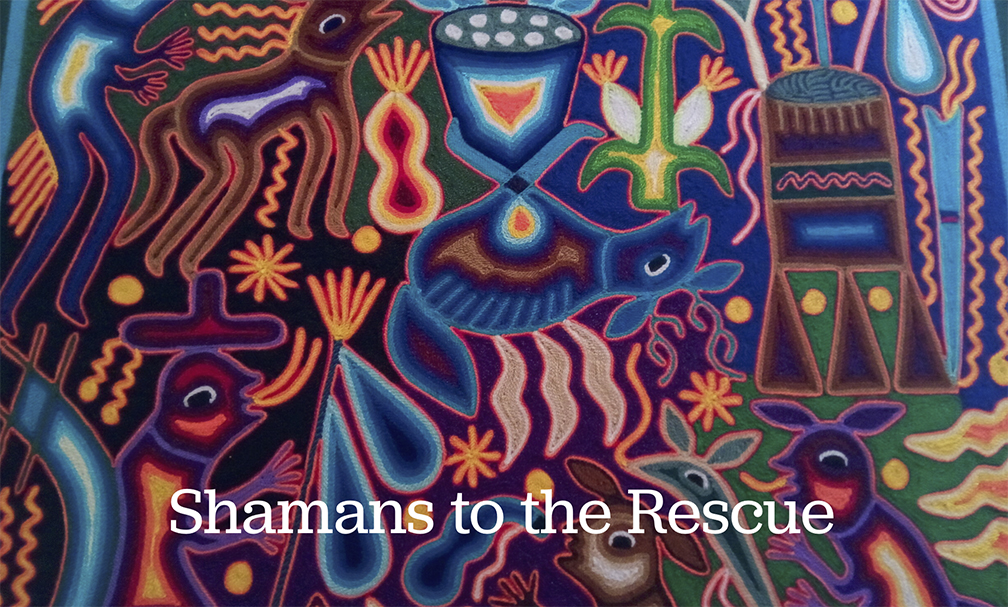
 www.awakeninthedream.com
www.awakeninthedream.com


